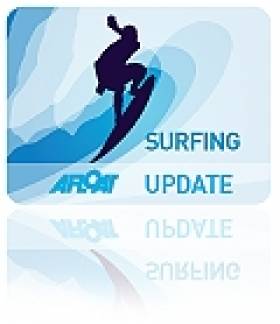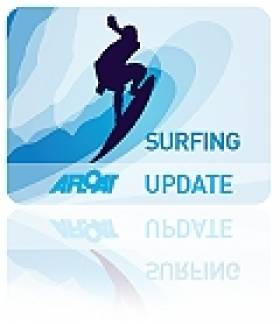Displaying items by tag: Vimeo
'One Epic Day of Huge Surf' Caught On Film
#SURFING - A new short film tells the story of "one epic day of huge surf" at Mullaghmore Head, as Surfer Today reports.
The Northcore film 'Fathoms Left to Fall' follows some of the world's top big wave surfers as they converged on Co Sligo to take advantage of the swell, prompted by the extreme weather system known as the 'Viking storm'.
Among the Irish riders featured is 24-year-old Ollie O'Flaherty, who has been nominated for the 'biggest wave' prize in the 2012 Billabong XXL Big Wave Awards for his monster ride at Mullaghmore.
Also nominated for his outstanding effort at the Sligo surf mecca is Andrew Cotton, a Devon native who's no stranger to Ireland's big rollers.
No Tow-In Surf Session for 2012
#SURFING - The second Billabong Tow-In Surf Session will not sadly run this year, following the end of the four-month waiting period yesterday.
Organisers decided to postpone the invitation-only event till next winter after conditions off Mullaghmore Head in Co Sligo failed to reach the minimum height requirement, as Magicseaweed reports.
“We’ve had a few swells that have come close,” said contest organiser Paul O’Kane of the Irish Surf Rescue Club. “However we set the standard incredibly high with the first event and were determined to only hold the event if the conditions were as good as that, if not better.”
Magicseaweed’s Ben Freeston concurred, saying that “the conditions needed for Mullaghmore to show it’s real face are so specific you might only see them a handful of times in the best years.
“This year we have had four or five swells that were big enough to be interesting, but not quite competition standard.”
The inaugural session was organised in an effort to dispel the myth that tow-in surfing, where surfers are towed by jetski to bigger offshore waves, is an irresponsible activity.
Last year's contest was also immortalised in an upcoming documentary from Mully Productions.
Video: West Coast is Winter Hotspot for Surf Pros
#SURFING - Conor Conlon of CMP has produced this wonderful video of top professional surfers taking on the Atlantic swells of the west coast this winter.
Setting up his gear on the shore during a window of clean swell, Conlon captured the likes of Aaron Dees, Conor Maguire, Easkey Britton and newly signed Ripcurl rider Noah Cohen catching the waves (more photos and video HERE).
Ireland's Big Wave Surfers Showcased in New Film
Ireland's first ever 'big wave' surfing contest has been immortalised in a new documentary film (SEE TRAILER BELOW).
High Pressure – The Story of Ireland’s First Big Wave Surfing Contest follows the story of those hardy souls who took on the monster waves at Sligo's Mullaghmore Head in the inaugural Tow-in Surf Session last February.
Produced, directed and edited by Dave Mottershead and Daniela Gross, the film also examines the philosophy of big-wave surfing and the value of the waves to Irish coastal communities, and is described as a "must-see and must-have" by website Surfer Today.
"Local surfers believe there are still new surf spots to be found and challenged on the Irish coast," the site adds, noting that the film "opens the professional book of surfing in Ireland".
For further enquiries regarding High Pressure – The Story of Ireland’s First Big Wave Surfing Contest, contact [email protected].
New Videos Show Two Sides of Kitesurfing in Ireland
Two new videos demonstrate the different sides of kitesurfing in Ireland.
The latter below shows Irish kiteboarder Ryan Coote taking on the intense big surf charged by the winds of Hurricane Katia on the west coast recently.
Meanwhile the former is a more reflective illustration of the kitesurfing scene in Northern Ireland this year.
Both show that Ireland can compete with the best in the world when it comes to quality waves.



























